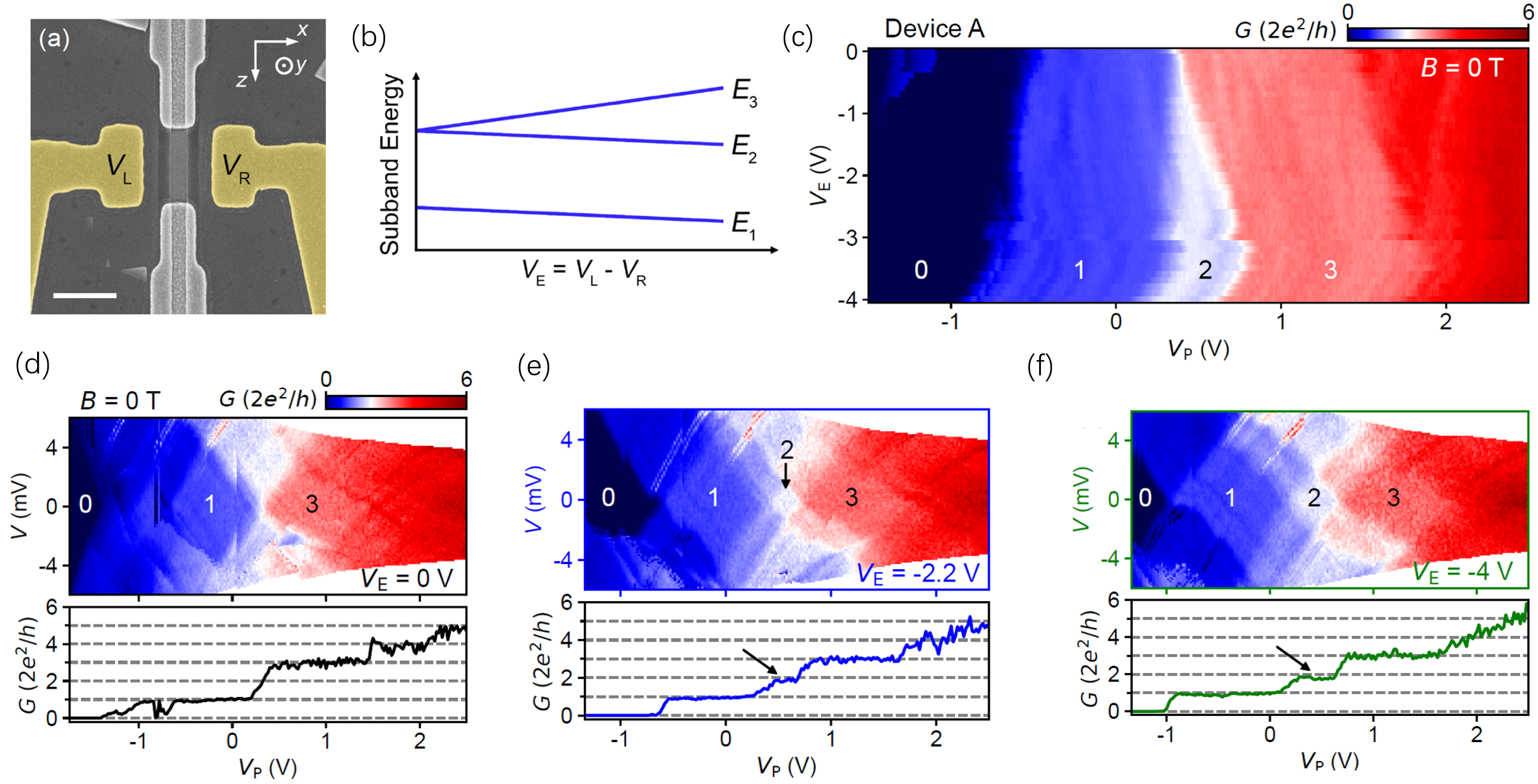Symmetry in quantum systems can lead to degeneracy. In semiconductor nanowires, the symmetric cross-sectional shape may hold degenerate eigenstates, corresponding to degenerate 1D subbands. This degeneracy is revealed as the absence of a quantized conductance plateau in transport, as the conductance of each occupied subband is quantized. This long-predicted phenomenon has been challenging to observe due to device disorder. Disorder can break the symmetry, lift the degeneracy, and destroy the quantization. Recently, a team led by Prof. Ke He and Prof. Hao Zhang has achieved gate-tunable subband degeneracy in PbTe nanowires. Their work indicated that the disorder level in those wires has been significantly reduced, holding promise for the realization of Majorana zero modes.
Panel a in the figure below shows the scanning electron micrograph of the device. The two side gates, VL and VR, can tune the electro-chemical potential and electric field in the wire through their linear combinations. When the electric field is zero (VE = 0), the symmetric potential profile can cause degenerate subbands (E2 = E3). The device conductance would exhibit plateaus at 0, 1, and 3 (in units of 2e2/h), while 2 plateau is absent due to this degeneracy. Increasing the electric field breaks the symmetry and lifts the degeneracy, causing the emergence of 2 plateau. Panel c shows this continuous evolution with the schematic shown in panel b. For the degenerate case, the bias vs gate scan reveals two diamonds, corresponding to the 1 and 3 plateaus (see panel d). For the non-degenerate case, 2 plateau is revealed as the white diamond, see panels e-f).

The work, entitled “Gate-tunable subband degeneracy in semiconductor nanowires”, is published in PNAS. The first authors are graduate students: Yuhao Wang and Wenyu Song, and Dr. Zhan Cao. Corresponding authors are Prof. Ke He and Prof. Hao Zhang. The work is supported by the National Natural Science Foundation of China, Ministry of Science and Technology of China, Tsinghua University Initiative Scientific Research Program, Beijing Municipal Science and Technology Commission, Hefei National Laboratory, and the Innovation Program for Quantum Science and Technology.
Paper Link: https://www.pnas.org/doi/10.1073/pnas.2406884121